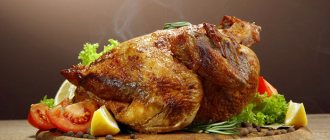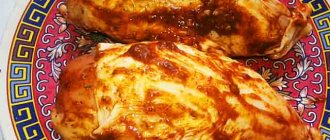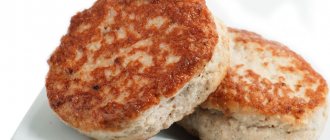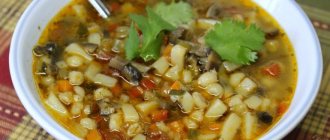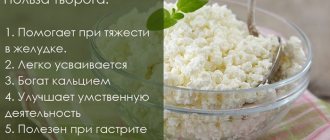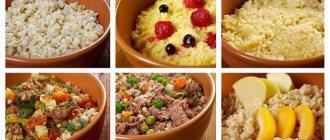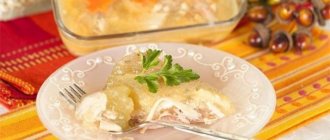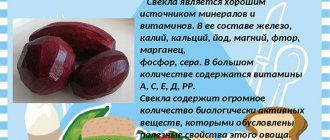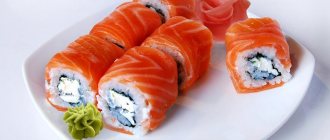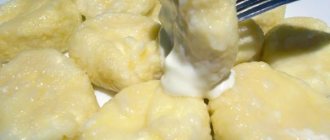Products
Calories and health benefits of chicken breast
6,612 2 minutes to read
Chicken breast is the basis of a diet for weight loss and many adherents of a healthy diet and lifestyle. It is an excellent source of lean protein. Dieters who consume enough protein will maintain muscle mass and a healthy metabolism. However, calculating the amount of chicken breast per 100 grams and the number of kcal contained in a chicken breast can be a difficult task, since its nutritional value depends on many factors.
- Calories and carbohydrates in chicken breast
- Health Benefits of Breast
- Selection and preparation
- Healthy cooking methods
- Recipes and cooking tips
- Afterword
Calories and carbohydrates in chicken breast
Table - Nutritional value of skinless and boneless chicken breast
| Serving size - 80 grams | |
| Daily Value per serving in %* |
| Total fat 2g | 10% |
| Saturated fat 2g | 9% |
| Polyunsaturated fat 0g | |
| Monounsaturated fat 1g | |
| Cholesterol 53mg | 18% |
| Sodium 46 mg | 2% |
| Potassium 159 mg | 3% |
| Carbohydrates 0.5 g | |
| Protein 29.8 g | |
| Vitamin A 0% Vitamin C 0% | |
| Calcium 1% Iron 4% | |
| *Based on a 2000 calorie diet | |
Chicken breasts are a great source of protein and contain almost no fat or sodium. They also have zero grams of carbohydrates, making them the ultimate low-carb food available. The approximate glycemic index for chicken breast (raw, skinless, boneless) is zero. Because it is such a versatile food, it can easily be included in any healthy diet.
To calculate how many calories are in chicken breast, you need to consider the cooking method and additional sources of calories that may be used during cooking. First of all, it is affected by the size of the chicken breast. One serving usually weighs about 100 grams and is about the size of your palm.
Many packaged chicken breast portions, however, are much larger. So if you decide to use it, most likely your portion is larger.
And, of course, if you leave the skin on the fillet, this immediately increases the proportion of fat, calories and energy value. A whole chicken breast with skin contains 366 calories, 55 grams of protein, 0 grams of carbohydrates, 14 grams of fat, 4 grams of saturated fat and 132 milligrams of sodium.
The cooking method, as well as any sauces or dressings you add to it, also make adjustments. 85 grams of grilled chicken contains 170 calories, 1 gram of carbohydrates, 11 grams of fat and 15 grams of protein.
One medium-roast chicken breast contains 364 calories, 34 grams of protein, 13 grams of carbohydrates, 18 grams of fat and 697 milligrams of sodium. Boiled chicken breast with 113 calories is a different story
Protein salad
To prepare a protein salad with chicken breast, take the following ingredients:
- 300 g chicken fillet;
- 200 g canned white beans;
- 2 cucumbers;
- 50 g dill;
- 1 tbsp. l. lemon juice;
- 1 tbsp. l. olive oils;
- 1/4 tsp. table salt.
Detailed cooking process:
- The first step is to defrost the fillet. You will need to pour water into the pan, put it on the fire and wait until it boils. When the water starts to boil, place the fillet in it and cook it until fully cooked for 20 - 25 minutes. Chicken should only be added to the pan after the water has boiled, otherwise the meat may become too dry.
- Next, you need to cut the boiled fillet into strips and put them in a salad bowl. You will need to drain the liquid from the can of beans and place the white chamfer on top of the chicken. The cucumber must be washed with cold water, peeled with a vegetable peeler and cut into cubes. The dill also needs to be washed, shake off excess moisture and finely chopped. Both ingredients can be added to the salad bowl.
- Now the salad components need to be mixed well and immediately season the salad with lemon juice and olive oil.
The salad prepared according to this recipe contains the following amounts of calories and dietary fat per 100 g:
- 14.6 g protein;
- 2.3 g fat;
- 17.6 g carbohydrates;
- 144 kcal.
A protein salad with boiled chicken fillet can be included in the menu for dinner or lunch.
Health Benefits of Breast
Chicken breast is an excellent source of lean protein. Protein helps the body maintain existing muscle mass, as well as build new muscle mass if you are doing a strength training program.
Chicken breast also has an excellent chemical composition: it is a very good source of selenium, phosphorus, vitamin B6 and niacin. The amount of sodium may vary depending on the cooking method, but it is also generally very low.
Champignons in a slow cooker
To prepare chicken breast with champignons, you will need the following ingredients:
- 500 g chicken breast;
- 500 g champignons;
- 100 ml cream;
- 1 tbsp. l. olive oil;
- 25 g of greens;
- freshly ground pepper;
- table salt.
Step-by-step cooking instructions:
- First you need to wash the chicken breast, dry it with a paper napkin, remove fat and cut into small pieces. Then you need to place the meat in the multicooker bowl, close the lid and simmer for 7-10 minutes.
- Afterwards, you need to wash the champignons, dry them and cut them into slices. Sliced mushrooms should be added to the meat, mixed well and cooked for 10 minutes.
- Then you need to pour cream into the meat with mushrooms, add table salt, freshly ground pepper and simmer for 15 minutes.
- Now you can wash the greens, dry them, chop them finely, sprinkle them on the dish, stir, arrange into portioned plates and serve.
Chicken breast (BJU per 100 grams differs depending on the cooking method) according to this recipe contains:
- 83 kcal;
- 13 g protein;
- 3.6 g fat;
- 0.4 g carbohydrates.
Cream in the dish can be replaced with milk.
Selection and preparation
You can purchase chicken breasts that are pre-cut and ready to use. Many grocery stores and wholesale warehouses also sell individually packaged frozen breasts. If you choose this option, check the label as they are often high in sodium.
When cooking with chicken, make sure to cook at the proper temperature for safety reasons.
Boneless chicken should be cooked at a temperature of 75 degrees Celsius, if there are bones, then at a temperature of 80 degrees. Be sure to thoroughly clean any surfaces that raw meat will come into contact with.
Chicken meat should be stored in the refrigerator. If frozen, it can last up to nine months.
Chicken broth with dumplings
To prepare 2 servings of broth with dumplings you will need the following set of ingredients:
- 300 g breast fillet;
- 100 ml skim milk;
- 4 slices of white bread;
- 1 liter of chicken broth;
- 1 carrot;
- 1 shallot;
- 50 g parsley;
- 1/2 tsp. table salt;
- 1/4 tsp. freshly ground pepper.
Detailed description of preparation:
- First you need to defrost the chicken fillet on the bottom shelf of the refrigerator. Thawed fillet should be cut into small cubes and place the meat in a blender bowl.
- Next, the slices of bread need to be soaked in milk for 3 - 4 minutes, then add them along with the milk to the chicken. You should also add table salt and freshly ground pepper.
- Then cut the green part of the shallot into large pieces and add it to the bowl. The contents of the bowl should be crushed using a blender into a homogeneous mass.
- Then you need to put the pan with the broth on the fire and wait for it to boil. In the meantime, the carrots will need to be washed in water, peeled with a vegetable peeler and cut into straw. Add chopped carrots to the boiling broth and reduce the heat.
- Now you need to form dumplings from the prepared mass using 2 spoons and lower them into the chicken broth. The dumplings need to be cooked until they float to the surface of the broth.
Chicken breast (BJU per 100 grams and calorie content may be low) in this recipe contains:
- 6.1 g protein;
- 0.9 g fat;
- 4.8 g carbohydrates;
- 53 kcal.
Dumpling broth can be included in the nutrition menu as a first course for lunch.
Healthy cooking methods
The way you cook a chicken breast can add hundreds of calories to the total amount of calories and fat in the dish. The healthiest methods for processing meat are grilling, baking or boiling. Regular frying or sautéing in oil will add fat and calories.
In addition to this, adding ingredients such as olive oil, barbecue sauce or any other will increase the calorie content and fat content of the dish.
BJU in other parts of the chicken
Losing weight on chicken fillet is simple and pleasant. You can prepare a lot of hearty and tasty dishes that will not be deposited with fat on the sides. In this case, the daily amount of calories can be reduced to 1100.
Nutritionists have developed several effective chicken diets. Their basis is rapid weight loss without return, benefits for the body, the ability to prepare simple and tasty dishes from chicken fillet.
Some important points:
- You can’t eat the skin - it contains a lot of fat, and substances that are used in the rapid raising of poultry - hormones and antibiotics.
- Use the healthiest processing methods for preparing dishes.
- Prohibition of adding salt. It can be replaced with soy sauce.
- Eat at least 5 times a day.
The calorie content can be reduced many times over if you know the secrets of preparing low-calorie fillet dishes:
- Frying. The winner in terms of calorie accumulation is the fried breast. The meat becomes denser, therefore difficult to digest, and loses its dietary qualities. But for those gourmets whose taste preferences are given to fried meat, we can recommend a healthier method of such processing - grilling without oil. The dish tastes fried and is healthier.
- Boiled meat is the best option for preparing fillet for weakened people, to fill their diet with light dietary dishes. You can increase the content of nutrients per unit mass of the product. To do this, rinse the fillet under running water, place it in a pan of cold water and let it boil. Then remove the meat from the broth, rinse with a cold stream, add a new portion of water, bring to a boil, skim off the foam and cook until fully cooked, adding a little salt. Chemicals and antibiotics are often used when raising poultry. With the first water they leave the meat.
- It is better to bake the breast in foil. The meat turns out juicy and tender (after all, the breast itself is a bit dry). This will not add any calories, since nothing is added to the meat. A set of low-calorie vegetables - onions, carrots, zucchini, tomatoes - will improve the taste and juiciness of the dish. Vegetables make the meat dish easier to digest.
To diversify the menu, you need to include all parts of the bird in your nutrition program. The thigh and drumstick contain more fat, which means their nutritional value is higher.
Chicken thigh
Depending on the method of heat treatment, it contains from 180 to 230 kcal, and the KBJU of a thigh baked with skin in foil is distributed as follows - 227/20/15/1.8 g per 100 g.
Chicken drumstick
Less caloric than thigh due to the large number of muscle fibers. A leg baked in the oven has the following KBJU indicators - 174/20/10/0.7 g per 100 g.
Chicken wing
| Wings | Calorie content, kcal | Proteins, g | Fats, g | Carbohydrates, g |
| Baked in the oven | 249 | 21 | 16 | 4 |
| Smoked | 301 | 23 | 23 | 0.3 |
| Fried | 267 | 21 | 18 | 7 |
The cooking method can add hundreds of calories to the final amount of fat and calories in your meat. Baking or boiling are generally the healthiest and lowest calorie cooking methods.
The amount of kcal depends on the cooking method
any type of meat. It is believed that most of the calories come from fried fillets. Additionally, adding seasonings such as
- barbecue sauce;
- breading;
- mayonnaise;
- honey or dipping in syrups also increases calorie and fat intake.
In this form, the dish turns out juicy and aromatic, but harmful to health.
Therefore, baked or boiled product is usually the healthiest type of meat with low calorie content.
Recipes and cooking tips
Need a quick and easy chicken breast dish? Breast with potatoes and vegetables can be prepared for future use on Sunday evening to provide yourself with dietary lunches for the week ahead. Pack each portion separately and keep it in the refrigerator, when you come home after a long day at work, they will be waiting for you, just take them out and heat them up.
However, remember that you can also use low-calorie chicken breast in a variety of dishes. For example, low-carb stuffed chicken breasts are one way to enjoy lean protein if you're on a low-carb diet. You can also add chicken breast to your favorite salad, soup, or make a pita pocket and fill it with vegetables and chicken for a healthy lunch or dinner.
Chicken breast fritters
To prepare chicken breast pancakes, take the following set of ingredients:
- 200 g breast fillet;
- 50 g oatmeal;
- 1 egg;
- 100 ml low-fat kefir;
- 1/4 tsp. table salt;
- 1/4 tsp. ground pepper.
Step-by-step description of the cooking process:
- First you need to remove the fillet from the refrigerator and defrost it at room temperature. Then the meat must be cut into small cubes and placed in a blender bowl. The meat should be minced until smooth minced meat is obtained.
- Next, you can pour the oatmeal into a bowl and pour kefir over it. The swollen flakes should be mixed into the minced meat, add the egg, add freshly ground pepper along with salt and mix all the ingredients again. If the mass turns out to be too dense, you can add a little kefir.
- Now you can put the non-stick frying pan on the fire. There is no need to add sunflower oil; this will reduce the final calorie content of the finished pancakes.
- Now you can pour several portions of the mixture into the frying pan and fry the pancakes on both sides for about 1 - 2 minutes until a golden coating is formed.
Ready-made chicken pancakes according to this recipe contain the following amount of calories and dietary fat per 100 g:
- 15.3 g protein;
- 3 g fat;
- 9.6 g carbohydrates;
- 128 kcal.
Ready-made pancakes can be served on plates lined with fresh lettuce leaves.
Recipe for chicken breast in a frying pan. Calorie, chemical composition and nutritional value.
| Chicken breast (fillet) | 600 g |
| Sunflower oil | 20 g |
| Ground black pepper or peas | 5 g |
make a filling of butter and pepper, you can use any seasonings, add a little salt, put the breast in the filling and let it sit for a while, about 5 minutes, then on a hot frying pan a little on both sides and simmer on low heat for about 15 minutes
Create your own recipe, taking into account the loss of vitamins and minerals you can use the recipe calculator in the My Healthy Diet app.
Chemical composition and nutritional analysis
Nutritional value and chemical composition of "chicken breast in a frying pan."
The table shows the nutritional content (calories, proteins, fats, carbohydrates, vitamins and minerals) per 100 grams of edible portion.
| Nutrient | Quantity | Norm** | % of the norm in 100 g | % of the norm in 100 kcal | 100% normal |
| Calorie content | 139.3 kcal | 1684 kcal | 8.3% | 6% | 1209 g |
| Squirrels | 22.7 g | 76 g | 29.9% | 21.5% | 335 g |
| Fats | 5 g | 56 g | 8.9% | 6.4% | 1120 g |
| Carbohydrates | 0.7 g | 219 g | 0.3% | 0.2% | 31286 g |
| Alimentary fiber | 0.2 g | 20 g | 1% | 0.7% | 10000 g |
| Water | 70.2 g | 2273 g | 3.1% | 2.2% | 3238 g |
| Ash | 1.092 g | ~ | |||
| Vitamins | |||||
| Vitamin A, RE | 0.2 mcg | 900 mcg | 450000 g | ||
| alpha carotene | 0.096 mcg | ~ | |||
| beta carotene | 0.002 mg | 5 mg | 250000 g | ||
| beta Cryptoxanthin | 0.2 mcg | ~ | |||
| Lycopene | 0.16 mcg | ~ | |||
| Lutein + Zeaxanthin | 3.632 mcg | ~ | |||
| Vitamin B1, thiamine | 0.068 mg | 1.5 mg | 4.5% | 3.2% | 2206 g |
| Vitamin B2, riboflavin | 0.069 mg | 1.8 mg | 3.8% | 2.7% | 2609 g |
| Vitamin B4, choline | 0.1 mg | 500 mg | 500000 g | ||
| Vitamin B5, pantothenic | 0.011 mg | 5 mg | 0.2% | 0.1% | 45455 g |
| Vitamin B6, pyridoxine | 0.002 mg | 2 mg | 0.1% | 0.1% | 100000 g |
| Vitamin B9, folates | 0.136 mcg | 400 mcg | 294118 g | ||
| Vitamin E, alpha tocopherol, TE | 1.416 mg | 15 mg | 9.4% | 6.7% | 1059 g |
| gamma tocopherol | 0.052 mg | ~ | |||
| Vitamin K, phylloquinone | 1.5 mcg | 120 mcg | 1.3% | 0.9% | 8000 g |
| Vitamin RR, NE | 7.3916 mg | 20 mg | 37% | 26.6% | 271 g |
| Niacin | 10.464 mg | ~ | |||
| Betaine | 0.071 mg | ~ | |||
| Macronutrients | |||||
| Potassium, K | 290.95 mg | 2500 mg | 11.6% | 8.3% | 859 g |
| Calcium, Ca | 11.22 mg | 1000 mg | 1.1% | 0.8% | 8913 g |
| Magnesium, Mg | 83.93 mg | 400 mg | 21% | 15.1% | 477 g |
| Sodium, Na | 57.76 mg | 1300 mg | 4.4% | 3.2% | 2251 g |
| Phosphorus, P | 165.5 mg | 800 mg | 20.7% | 14.9% | 483 g |
| Chlorine, Cl | 73.92 mg | 2300 mg | 3.2% | 2.3% | 3111 g |
| Microelements | |||||
| Iron, Fe | 1.422 mg | 18 mg | 7.9% | 5.7% | 1266 g |
| Yod, I | 5.76 mcg | 150 mcg | 3.8% | 2.7% | 2604 g |
| Cobalt, Co | 8.64 mcg | 10 mcg | 86.4% | 62% | 116 g |
| Manganese, Mn | 0.1212 mg | 2 mg | 6.1% | 4.4% | 1650 g |
| Copper, Cu | 87.44 mcg | 1000 mcg | 8.7% | 6.2% | 1144 g |
| Molybdenum, Mo | 10.56 mcg | 70 mcg | 15.1% | 10.8% | 663 g |
| Selenium, Se | 0.039 mcg | 55 mcg | 0.1% | 0.1% | 141026 g |
| Fluorine, F | 125.07 mcg | 4000 mcg | 3.1% | 2.2% | 3198 g |
| Chromium, Cr | 24 mcg | 50 mcg | 48% | 34.5% | 208 g |
| Zinc, Zn | 1.2575 mg | 12 mg | 10.5% | 7.5% | 954 g |
| Digestible carbohydrates | |||||
| Galactose | 0.001 g | ~ | |||
| Glucose (dextrose) | 0.002 g | ~ | |||
| Fructose | 0.002 g | ~ | |||
| Essential amino acids | |||||
| Arginine* | 1.75 g | ~ | |||
| Valin | 1.252 g | ~ | |||
| Histidine* | 1.268 g | ~ | |||
| Isoleucine | 1.088 g | ~ | |||
| Leucine | 1.909 g | ~ | |||
| Lysine | 2.536 g | ~ | |||
| Methionine | 0.433 g | ~ | |||
| Methionine + Cysteine | 0.835 g | ~ | |||
| Threonine | 1.068 g | ~ | |||
| Tryptophan | 0.365 g | ~ | |||
| Phenylalanine | 1.021 g | ~ | |||
| Phenylalanine+Tyrosine | 1.882 g | ~ | |||
| Nonessential amino acids | |||||
| Alanin | 1.253 g | ~ | |||
| Aspartic acid | 1.874 g | ~ | |||
| Hydroxyproline | 0.202 g | ~ | |||
| Glycine | 0.887 g | ~ | |||
| Glutamic acid | 2.728 g | ~ | |||
| Proline | 0.981 g | ~ | |||
| Serin | 0.973 g | ~ | |||
| Tyrosine | 0.868 g | ~ | |||
| Cysteine | 0.414 g | ~ | |||
| Sterols (sterols) | |||||
| Cholesterol | 9.6 mg | max 300 mg | |||
| Phytosterols | 0.736 mg | ~ | |||
| beta sitosterol | 6.4 mg | ~ | |||
| Saturated fatty acids | |||||
| Saturated fatty acids | 0.9 g | max 18.7 g | |||
| 8:0 Caprylic | 0.001 g | ~ | |||
| 12:0 Lauric | 0.001 g | ~ | |||
| 14:0 Miristinovaya | 0.01 g | ~ | |||
| 16:0 Palmitinaya | 0.587 g | ~ | |||
| 18:0 Stearic | 0.22 g | ~ | |||
| 20:0 Arakhinovaya | 0.019 g | ~ | |||
| 22:0 Begenovaya | 0.022 g | ~ | |||
| Monounsaturated fatty acids | 1.449 g | min 16.8 g | 8.6% | 6.2% | |
| 16:1 Palmitoleic | 0.116 g | ~ | |||
| 17:1 Heptadecene | 0.01 g | ~ | |||
| 18:1 Oleic (omega-9) | 1.32 g | ~ | |||
| 18:1 cis | 0.005 g | ~ | |||
| Polyunsaturated fatty acids | 2.299 g | from 11.2 to 20.6 g | 20.5% | 14.7% | |
| 18:2 Linolevaya | 2.102 g | ~ | |||
| 18:3 Linolenic | 0.011 g | ~ | |||
| 18:3 Omega-3, alpha-linolenic | 0.001 g | ~ | |||
| 20:3 Eicosatriene | 0.001 g | ~ | |||
| 20:4 Arachidonic | 0.019 g | ~ | |||
| Omega-6 fatty acids | 2.1 g | from 4.7 to 16.8 g | 44.7% | 32.1% |
